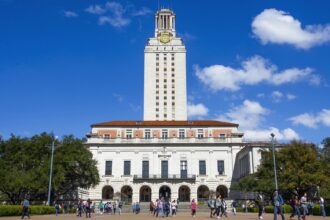Test scores are declining despite nearly double the amount of money Chicago Public Schools (CPS) has spent on each student over the past decade.
According to a recent analysis by Illinois Policy, the district is spending $29,028 per student in the current school year, a 97% increase from 2012. The report used data from the Illinois State Board of Education about the 2022-2023 school year and discovered that proficiency in reading dropped by 63%, and proficiency in math also declined by 78%.
It happens at a time when students nationwide are having difficulty making up for Covid-19 losses. According to the Education Recovery Scorecard, a student of the state and national test scores by researchers at the University of Harvard and Stanford, students have nationally recovered one-third of what they lost in arithmetic and one-quarter of what they lost in reading.
Experts have warned that progress may slow when federal funding expires in September, even though student states like Illinois have used funds from the deal to help students catch up.
According to a recent Public Agender survey, parents’ top concern about Chicago’s public schools is that their children aren’t learning enough, and few believe that the Chicago Public School (CPS) budget is spent wisely. Four out of ten respondents felt that CPS should make better use of its current money, while just over half thought it needed more funding.
“Despite a long history of being underfunded,” a district spokesperson told the media, CPS is “committed to make the best use of all funding to support our children.” “Though state funding has increased in recent years, CPS is still underfunded by more than one billion dollars based on the state’s definition and formula for providing for adequate funding for public education.”
The spokesperson stated that the district’s elementary students are making strong progress, citing the preliminary findings from the Illinois Assessment of Readiness (IAR) test that was given to third -through eight-graders in the pre-pandemic levels.
According to the preliminary findings, 31% of the students achieved proficiency in English Language Arts this year, up from 26% in 2023 and surpassing the pre-pandemic achievement levels. In addition, 19% of the students achieved proficiency in maths in the 2024 school year, up from 17% in the previous year but still below the pre-pandemic levels.
Prof Aria Razfar of the University of Illinois at Chicago’s College of Education stated that while funding might have increased, inflation and the pandemic had significantly impacted the educational results. He added, “These effects have been disproportionate in lower socioeconomic neighborhoods.”
When comparing wealthy suburban districts with a predominately White population to a small rural or urban predominately Black and brow population, the trends are bipolar distribution in terms of the average operating expenses nationally and statewide. The differences over time are significant and affect the results of education. In this instance, the overall historical disparity still exists even though the spending may have doubled recently.”
A district spokesperson stated that to address the disparities, the district heavily invested in practices and programs that impacted the instructional core and focused on learning acceleration and strengthening grade-level instruction.” “We committed to the expansion of the expansion of a high-quality, culturally relevant curriculum available to every school to ensure that students have access to rigorous and relevant curricular materials.”
A fact sheet regarding the district’s budget for the 2025 fiscal year states that the district is facing a shortfall of nearly $400 million due to the pandemic relief program ending this year. The district states that while the funding levels for certain students may vary, the overall amount for schools’ budgets will not be lowered.
The district will also next year “complete its transition away from a budget model that primarily relied on enrollment also known as student-based budgeting to a more equitable and transparent model that better support the varying needs of students across our city.”
According to Prof. Camille Blachowicz, a National Louis University professor at the National College of Education and a co-director of The Reading Leadership, “Chronic absenteeism is also hindering students’ academic progress.” “This is a terrible problem,” she added. “Teachers do a heroic job as all these challenges arise and hit the schools first and harder than you can imagine.”















